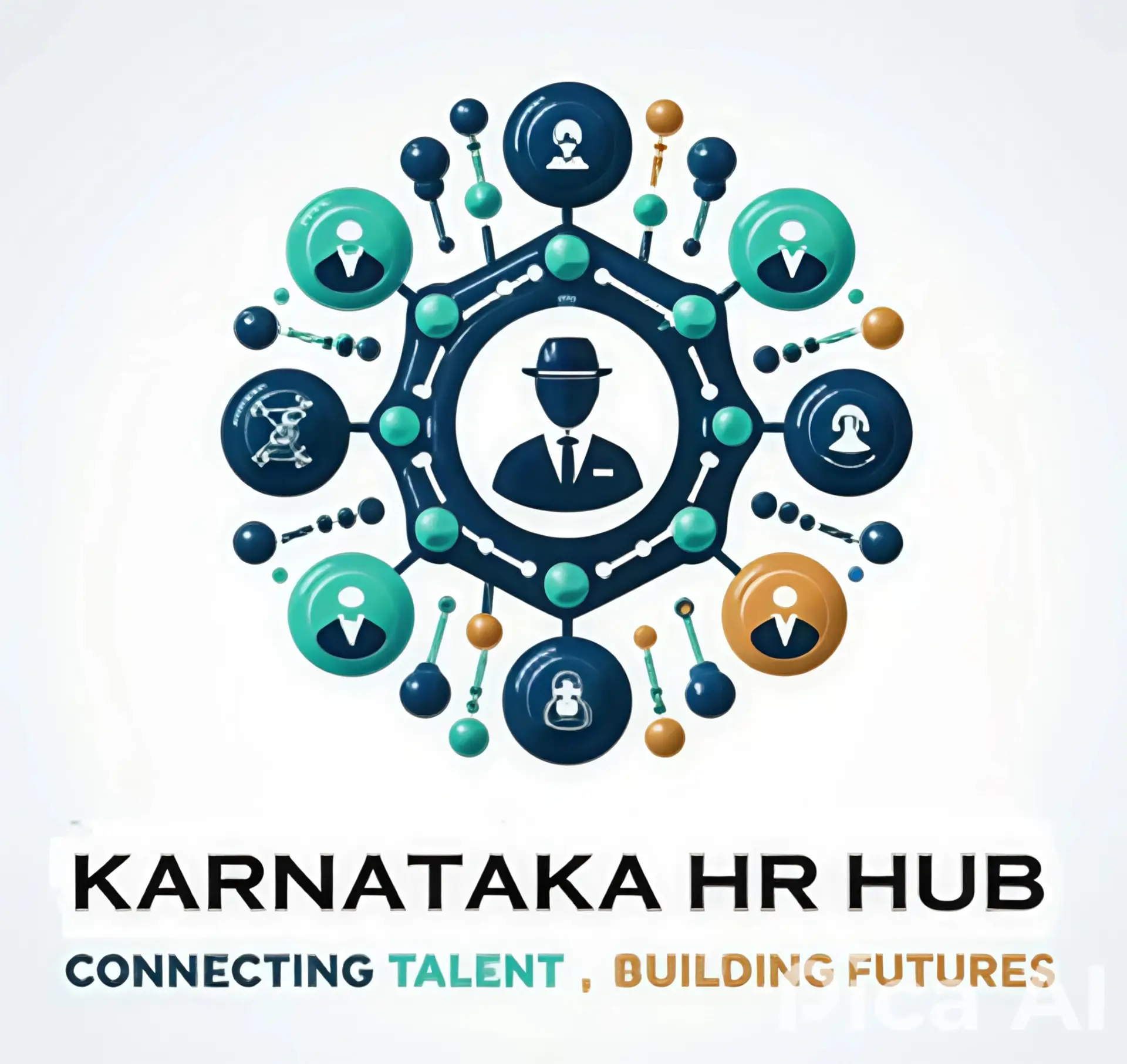The Ultimate Guide to Personality Tests: Types, Examples, and How HR Uses Them

Introduction: Why Personality Tests Matter in HR
Imagine a situation: A multinational bank hires a finance manager with stellar credentials. His resume screams “perfect candidate”—Ivy League degree, CPA certification, glowing references. But within a year, problems arise. He struggles with team communication, clashes with colleagues, and avoids collaborative projects. Eventually, he resigns, leaving behind a demotivated team and a costly hiring mistake.
This story isn’t unique. According to industry research, over 80% of Fortune 500 companies now use personality assessments as part of their recruitment and leadership programs. Why? Because skills alone don’t guarantee workplace success. Personality shapes how employees interact, handle stress, and adapt to challenges.
For HR professionals, understanding the types of personality tests is essential. They’re not just tools for screening—they’re powerful resources for improving culture fit, reducing attrition, building leaders, and strengthening teams.
More Read: 20 Essential ChatGPT Prompts for HR
What Are Personality Tests?
A personality test is a structured method to measure how people typically think, behave, and interact with others. Unlike skill or cognitive assessments, which measure what you can do, personality tests assess how you’ll do it.
Common Uses in Workplaces
Recruitment & Selection – Choosing candidates aligned with company values.
Leadership Development – Identifying future managers.
Team Building – Reducing conflicts and improving collaboration.
Succession Planning – Preparing employees for leadership transitions.
| Test Type | Measures | HR Use |
|---|---|---|
| Personality Test | Traits, behaviors, preferences | Team fit, leadership, engagement |
| Skill Test | Technical abilities, knowledge | Specific role performance |
| Cognitive Test | Reasoning, problem-solving | Decision-making, critical thinking |
Why Personality Tests Are Used in Workplaces
Improving Culture Fit – An employee who fits the company’s values is more engaged and productive.
Predicting Performance – Certain traits, like conscientiousness, predict job success across industries.
Identifying Leaders – Tests highlight employees with strong influence, resilience, and decision-making ability.
Reducing Turnover – Bad hires cost thousands. Tests reduce mismatches early.
💡 Case Study: Infosys uses personality assessments during campus recruitment. By mapping graduates to roles suited to their personality (e.g., analytical minds to research, extroverts to client roles), they’ve significantly reduced early attrition.
Read : HR Analytics in India: Tools, Trends & Insights for Talent Strategy
The Major Types of Personality Tests
Here’s a deep dive into the most widely used types of personality tests, with scenarios, real companies, and preparation advice.
1. Myers-Briggs Type Indicator (MBTI)
Overview: MBTI assigns people to 16 personality types across four dichotomies: Extraversion/Introversion, Sensing/Intuition, Thinking/Feeling, and Judging/Perceiving.
Workplace Example: Deloitte and TCS run MBTI workshops to improve communication and leadership. Teams use MBTI to understand preferences (introverts thrive in focused roles; extroverts in brainstorming).
Pros: Easy to use, highly popular.
Cons: Limited predictive accuracy.
Employee Tip: Frame strengths from your MBTI type in interviews. For example, an ENTP can highlight creativity and adaptability.
HR Tip: Use MBTI for team building and leadership workshops, not hiring decisions.
2. Big Five Personality Traits (OCEAN)
Overview: The scientific gold standard, measuring Openness, Conscientiousness, Extraversion, Agreeableness, and Neuroticism.
Workplace Example: Amazon uses Big Five in leadership recruitment. Google applies it for management roles, especially around openness and conscientiousness.
Pros: Research-backed, predictive of success.
Cons: Requires expert interpretation.
Employee Tip: Share examples of traits. For example: “I demonstrated conscientiousness by managing three cross-department projects with zero missed deadlines.”
HR Tip: Match jobs to traits. Auditors = high conscientiousness; designers = high openness.
3. DISC Assessment
Overview: Classifies behavior into Dominance, Influence, Steadiness, and Compliance.
Workplace Example: Infosys applies DISC in leadership development. Startups use DISC for sales hiring—high Influence types thrive in persuasion roles.
Pros: Simple, action-oriented.
Cons: Lacks deep detail.
Employee Tip: Use DISC insights to adapt your communication style.
HR Tip: Ideal for team restructuring and role assignments.
4. Hogan Personality Inventory (HPI)
Overview: Measures strengths and derailers in workplace behavior.
Workplace Example: Coca-Cola and Unilever apply Hogan to screen executives.
Pros: Strong predictive validity.
Cons: Expensive and requires training.
Employee Tip: Be consistent; Hogan detects overthinking.
HR Tip: Great for executive selection and succession planning.
5. Minnesota Multiphasic Personality Inventory (MMPI)
Overview: A clinical tool adapted for safety-sensitive jobs.
Workplace Example: US police departments use MMPI for officer recruitment. Airlines apply it to ensure pilot stability.
Pros: Comprehensive, reliable.
Cons: Not suited for everyday hiring.
Employee Tip: Answer honestly—the MMPI is designed to catch inconsistencies.
HR Tip: Use only in defense, aviation, and law enforcement.
6. Situational Judgment & Behavioral Tests
Overview: Present workplace dilemmas and ask for responses.
Workplace Example: Accenture uses these for leadership programs. Banks use them in graduate hiring.
Pros: Practical, role-specific.
Cons: Needs customization.
Employee Tip: Choose answers that balance ethics and teamwork.
HR Tip: Useful for mass hiring and graduate programs.
7. Caliper Profile
Overview: Evaluates personality traits linked to job performance, like leadership and motivation.
Workplace Example: Pfizer and Johnson & Johnson apply it for sales hiring.
Pros: Strong job-performance alignment.
Cons: Time-intensive.
Employee Tip: Reflect on experiences where you showed initiative.
HR Tip: Great for sales, leadership, and client-facing roles.
8. 16 Personality Factor Questionnaire (16PF)
Overview: Measures 16 traits including warmth, dominance, and rule-consciousness.
Workplace Example: Used in IT consultancies and HR firms for career development.
Pros: Detailed and accurate.
Cons: Complex for HR without training.
Employee Tip: Use results to identify areas for growth.
HR Tip: Effective for coaching and leadership development.
9. SHL Occupational Personality Questionnaire (OPQ32)
Overview: Covers 32 traits under relationships, thinking, and emotions.
Workplace Example: HSBC, Barclays, and Nestlé use SHL OPQ globally.
Pros: Highly validated and standardized.
Cons: Costly.
Employee Tip: Expect preference-based questions—stay consistent.
HR Tip: Ideal for large-scale hiring and global recruitment.
10. Eysenck Personality Inventory (EPI)
Overview: Measures Extraversion/Introversion and Neuroticism with a lie scale.
Workplace Example: Used in graduate recruitment programs in Europe.
Pros: Quick, simple.
Cons: Too basic for complex HR roles.
Employee Tip: Don’t fake answers—the lie scale catches it.
HR Tip: Best for early-stage screening.
How to Choose the Right Personality Test
| Objective | Best Fit Test |
|---|---|
| Team Building | MBTI / DISC |
| Leadership Pipeline | Hogan / Big Five |
| Sales Hiring | Caliper Profile |
| Career Coaching | 16PF |
| High-Risk Jobs | MMPI |
| Mass Hiring | Situational Judgment / SHL OPQ |
| Graduate Screening | EPI |
Best Practices for Using Personality Tests in HR
While personality tests are powerful tools, their effectiveness depends on how they’re applied. Misuse can lead to bias, legal risks, or disengaged candidates. Here are the current best practices HR leaders should follow—along with real-world scenarios showing why they matter.
1. Don’t Rely Solely on Tests — Combine with Interviews and Skills Assessments
💡 Scenario: A financial services company once rejected a highly skilled data analyst because her test showed “low extroversion.” But in reality, her role required quiet focus and analytical thinking, not high sociability. After revising their process to combine skills tests + structured interviews + personality assessments, they improved hiring accuracy by 45%.
Present Trend: Companies now use multi-method hiring—combining AI personality tests with job simulations and structured behavioral interviews to ensure a full picture.
2. Be Transparent with Candidates — Explain Why the Test is Used
💡 Scenario: Infosys noticed some candidates skipping assessments during campus hiring. When recruiters began explaining that results help match candidates to roles suited to their personality, completion rates rose by 30%.
Present Trend: Organizations now share pre-test guides and FAQs so candidates know what to expect, reducing anxiety and boosting participation.
3. Ensure Fairness by Using Validated Assessments
💡 Scenario: A European retailer faced backlash after using an unverified test in mass hiring, which unfairly disadvantaged neurodiverse candidates. They later switched to the SHL OPQ32, which is globally validated, and improved both fairness and legal compliance.
Present Trend: Many companies now work with industrial-organizational psychologists to validate tests for their workforce and comply with diversity and inclusion standards.
4. Share Results — Employees Benefit from Self-Awareness
💡 Scenario: At Deloitte, after MBTI workshops, employees receive personalized reports and coaching on how to apply their strengths at work. This boosted team collaboration scores by 25%.
Present Trend: Firms are building employee dashboards where individuals can track their personality data over time, linking it to career paths, training opportunities, and performance reviews.
💡 Pro Tip for HR: Use Test Results as a Starting Point, Not a Final Verdict.
💡 Scenario: A manager sees that a team member scored low on “influence” in a DISC test. Instead of denying promotion, they use coaching sessions to develop influencing skills through mentoring and training. Within a year, the employee successfully transitioned into a client-facing leadership role.
Present Trend: The focus is shifting from selection-only use to developmental use—companies increasingly treat personality assessments as tools for growth, not gatekeeping.
✅ Key Takeaway: The best organizations use personality tests not as filters, but as mirrors—tools that reveal strengths, guide development, and support better decision-making.
Read : Streamlining HR with ChatGPT: A Practical Guide for Professionals
Future Trends: AI & Personality Testing
1. AI-Powered Adaptive Assessments
Instead of static questionnaires, AI-driven tests adjust in real-time based on candidate responses.
💡 Scenario: A global consultancy is hiring project managers. Traditional tests often bored candidates and led to predictable responses. By adopting an AI-powered adaptive test, each candidate now gets a unique set of questions. The result? A personalized, fairer assessment that pinpoints leadership styles more accurately.
2. Integration with HR Dashboards and ATS Platforms
Modern assessments integrate with ATS and HR dashboards, giving recruiters instant insights into candidate fit.
💡 Scenario: A retail giant receives 10,000 applications for customer service roles. Instead of manually reviewing test reports, the HR dashboard instantly highlights top candidates by personality-job match score. This cut screening time by 60%.
3. Personality Analytics for Hybrid and Remote Teams
AI-driven analytics reveal collaboration preferences and stress triggers for hybrid teams.
💡 Scenario: A tech startup found introverts preferred written collaboration. Switching from Zoom calls to Slack boosted engagement by 40%.
4. Gamified Testing for Candidate Engagement
Gamified tests simulate workplace challenges in a game-like format, making assessments engaging and insightful.
💡 Scenario: A gaming company introduced a gamified test where candidates build virtual teams. It revealed adaptability and problem-solving while keeping candidates motivated.
✅ Key Takeaway: The future of personality testing isn’t about more questions—it’s about smarter, adaptive, and engaging tools that provide HR leaders with sharper insights while offering candidates a more positive experience.
Conclusion
Personality tests aren’t about putting people into boxes. They’re tools for unlocking potential, strengthening teamwork, and reducing costly hiring mistakes.
From MBTI to SHL OPQ, the types of personality tests used today are helping companies like Amazon, Deloitte, Infosys, and Unilever hire better, lead smarter, and build stronger cultures.
Read: Streamlining HR with ChatGPT: A Practical Guide for Professionals
FAQs
1. What are the most common workplace personality tests?
MBTI, Big Five, DISC, Hogan, Caliper, and SHL OPQ are widely used.
2. Which companies use personality tests?
Amazon (Big Five), Deloitte (MBTI), Infosys (DISC), Unilever (Hogan), Pfizer (Caliper), HSBC (SHL OPQ).
3. Can candidates prepare for personality tests?
Yes—by reflecting on real experiences and staying authentic.
4. Do personality tests predict job success?
Some, like Hogan and Big Five, have strong predictive validity.
5. Are personality tests fair for all candidates?
When validated, yes. But they should never replace interviews or skills tests.
6. Do employees benefit from personality tests too?
Absolutely—they improve self-awareness, communication, and career growth.
